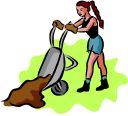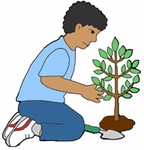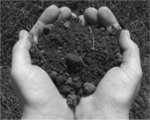By Laura G. Smith

|
The Scoop on Soil
By Laura G. Smith |

|
 1 What do earth worms, fresh vegetables, and fragrant flowers all have in common? They all rely upon soil for their existence. Actually, all forms of life on earth depend upon the soil, either directly or indirectly.
1 What do earth worms, fresh vegetables, and fragrant flowers all have in common? They all rely upon soil for their existence. Actually, all forms of life on earth depend upon the soil, either directly or indirectly. |
Create Weekly Reading Books
Prepare for an entire week at once! |
| Leave your feedback on The Scoop on Soil (use this link if you found an error in the story) |
 |
Earth Day Worksheets - Caring for Earth | edHelper.com
|
 |
Earth Day Activities, Printables, Worksheets, and Lesson Plans for Kids
|
 |
Soil Worksheets | edHelper.com
|
 |
Science
|